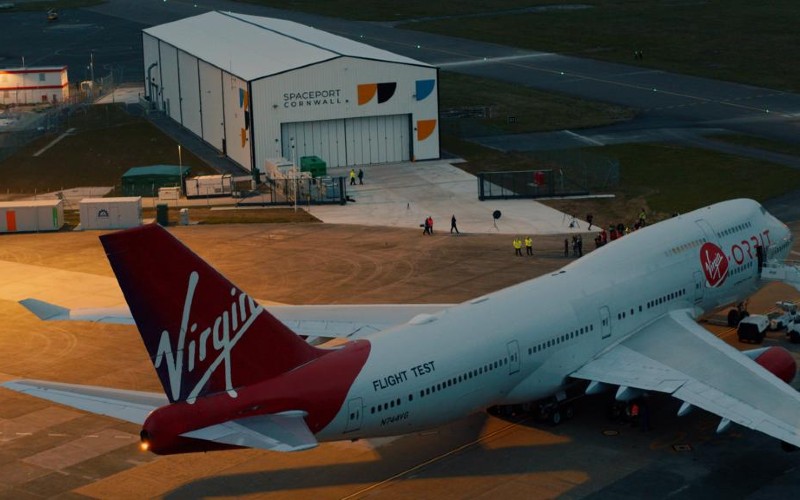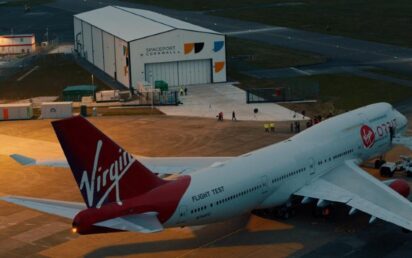Fresh details have emerged about why the first ever satellite mission launched from UK soil ended in failure.
The world watched last week as the Virgin Orbit company carried a rocket out of Newquay, Cornwall, to release it high over the Atlantic Ocean.
Although the rocket ignited the mission was aborted after suffering an ‘anomaly’ and the satellites it was carrying could not be released.
Preliminary analysis of data from the Start Me Up mission has begun to shed new light on what went wrong.
The flight was conducted by Virgin Orbit’s air-launched LauncherOne system from the newly commissioned Spaceport Cornwall.
After successfully proceeding through pre-launch operations and taking off as planned from the runway at Spaceport Cornwall, Virgin Orbit’s carrier aircraft travelled to a chosen drop zone selected for this mission and successfully released the rocket.
The rocket then ignited its first stage engine, quickly going hypersonic and successfully completing the stage one burn.
Initial data assessments indicate that the first stage of the rocket performed as expected, that the rocket reached space altitudes, and that stage separation, ignition of the upper stage, and fairing separation similarly occurred per the planned mission timeline.
However, later in the mission, at an altitude of approximately 180km, the upper stage experienced an anomaly which prematurely ended the first burn of the upper stage.
This event ended the mission, with the rocket components and payload falling back to Earth within the approved safety corridor without ever achieving orbit.
Virgin Orbit’s carrier aircraft and its crew returned safely to Spaceport Cornwall.
The company’s formal investigation into the source of the second stage failure is being led by Jim Sponnick, a distinguished aerospace veteran, and principal investigator Chad Foerster.
An extensive fault analysis and investigation and completion of all required corrective actions identified during the investigation will be completed prior to the next flight.
Virgin Orbit is continuing to process its next scheduled rocket through final integration and checkout ahead of its upcoming mission, which is planned to occur from the Mojave Air and Space Port in California.
Virgin Orbit also anticipates returning to Spaceport Cornwall for additional launches, and is in active discussions with key government and commercial stakeholders in the UK to start planning mission opportunities for as soon as later this year.
Dan Hart, CEO of Virgin Orbit, said: “We are all disappointed that we were not able to achieve full mission success and provide the launch service that our customers deserve.
“Upon identifying the anomaly, our team immediately moved into a pre-planned investigation mode. Given our four previous successful missions, which have proven our technology, our team’s deep understanding of the LauncherOne system from massive amounts of previously collected flight data, and the ample telemetry data that was collected characterizing the flight and the anomaly, I am confident that root cause and corrective actions will be determined in an efficient and timely manner.
“We are continuing to process and test our next vehicle per our plan and will implement any required modifications prior to our next launch.
“I also want to express my heartfelt appreciation to our team, who worked tirelessly under high pressure and difficult conditions, and most importantly to our customers, supporters, and partners in the UK, the US, and across the world. We thank you for the many expressions of confidence and support we have received over the past two days.”
Virgin Orbit was founded by Sir Richard Branson in 2017 and began a commercial service in 2021.


